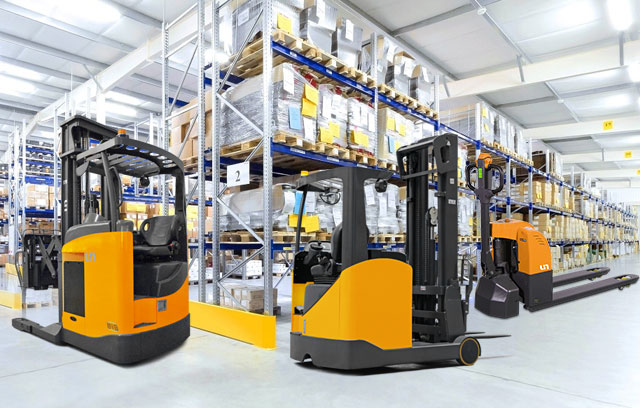Maintenance of internal combustion forklifts is the key to ensure their long-term stable operation and extended service life.
Change the engine oil: Regularly change the engine oil and oil filter to keep the engine clean and reduce wear.
Check the cooling system: Make sure the coolant level is appropriate, there is no leakage, and the radiator is clean to ensure that the engine does not overheat.
Check the fuel system: Including the fuel filter, fuel pump and injector to ensure smooth fuel supply.
Transmission oil: Regularly change the transmission oil and check the oil level and oil quality.
Drive shaft and universal joint: Check the lubrication to ensure there is no abnormal wear or damage.
Brake fluid: Check the brake fluid level to ensure that the braking system is responsive.
Brake pads and brake drums: Check the wear regularly and replace if necessary.
Hydraulic oil: Check the oil level and oil quality of the hydraulic oil, and replace it regularly to keep the hydraulic system working properly.
Hydraulic cylinder and hydraulic pipeline: Check for leaks and ensure good sealing performance.
Battery: Check the battery fluid level, clean the battery terminals, and ensure good electrical connections.
Wiring and fuses: Check electrical wiring for wear or damage, and replace damaged fuses.
Tire pressure: Check tire pressure regularly to ensure it meets the manufacturer's recommended value.
Tire wear: Check tire wear and replace or rotate if necessary to extend service life.
Frame and fork: Check for cracks, deformation or other damage, and repair or replace if necessary.
Safety devices: Check whether seat belts, seats, operating levers, etc. are firm and function properly.
Check all lights: including headlights, taillights, turn signals and brake lights, and ensure that they all work properly.
Signal system: Ensure that all signal systems (such as horns) function properly.
Regular cleaning: Keep the forklift clean inside and outside, remove dust, oil and other debris.
Check cleaning agents and tools: Ensure that cleaning agents and tools are properly stored to avoid damage to the forklift.
Develop a maintenance plan: Develop a detailed maintenance plan based on the manufacturer's recommendations and the use of the forklift.
Record maintenance history: Record the date, content and replaced parts of each maintenance to track the maintenance status of the forklift.
The maintenance of internal combustion forklifts is a comprehensive process involving multiple systems and components. Regular and correct maintenance can ensure the performance, safety and service life of the forklift. In addition, maintenance can also help reduce failure rates and repair costs and improve work efficiency. Therefore, forklift operators and managers should pay attention to maintenance work to ensure that the forklift is always in the good condition.
- Home
- About
-
Product
-

IC Forklift
Ranges
-

Electric Forklift
Ranges
-

Warehouse Equipment
Ranges
-
- CUSTOMER CARE
- INDUSTRY SOLUTION
- News
- Contact








 中文简体
中文简体 عربى
عربى Español
Español














